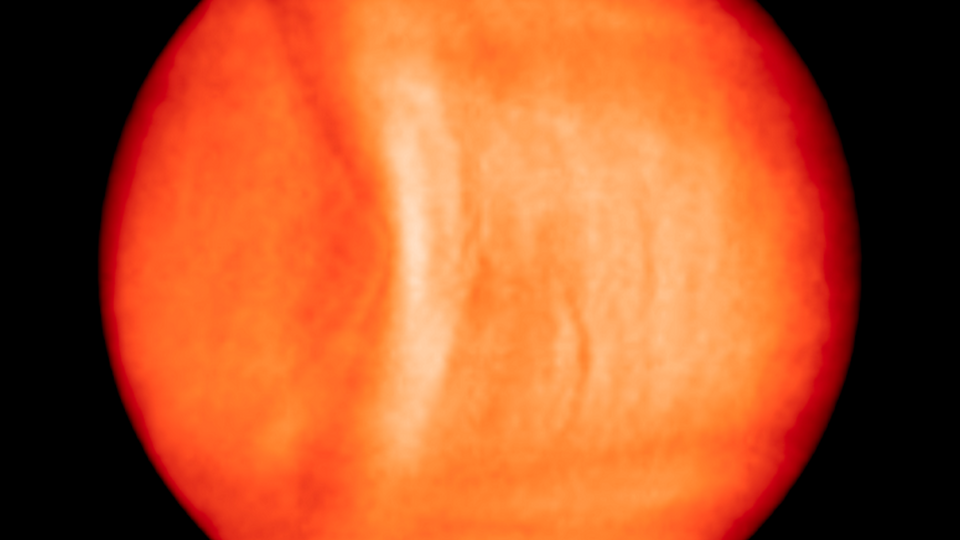Universe Update
Strange Waves Observed on Venus

A new analysis of images taken by the Japanese spacecraft, Akatsuki, explains some interesting features in Venus’s thick clouds. Venus rotates relatively slowly, taking about 243 Earth days to spin once completely. Normally Venus’s upper atmosphere moves much faster than the planet’s rotation, with the sulfuric acid clouds moving at around 100 meters per second (more than 220 miles per hour). However, in early December 2015, Akatsuki took images of a humongous bow-shaped area that was behaving very differently from the surrounding atmosphere. This 10,000-kilometer (6,200-mile) long region was hardly moving at all compared to the slowly rotating Venusian surface below. Scientists at JAXA released a paper this week in Nature Geoscience explaining what is likely causing this planet-long disturbance.
The explanation for this large bow is a phenomenon that is not uncommon on Earth: a stationary gravity wave. A gravity wave (not to be confused with a gravitational wave) might sound a bit complex and unusual, but if you’ve ever seen waves breaking on a beach or noticed what looks like long strips of clouds on an overcast day, you’re familiar with gravity waves. But the venusian wave is on a scale much bigger than any that we see on our planet. The wave was located at the western edge of the highland region Aphrodite Terra. As air near the ground level approached the mountains in Aphrodite Terra it mixed with air higher in the atmosphere, creating this bow-shaped region of higher-temperature clouds. And this gravity wave is so large that the JAXA scientists describe it as “perhaps the greatest ever observed in the Solar System.”
The fact that this stationary gravity wave was able to form, and last for more than four Earth days, is actually pretty surprising. Convection in Venus’s atmosphere often kills off these waves quickly, but the location of this wave seems to have been just right. The JAXA scientists created a numerical model to simulate what they were observing and found that the bow wave matched very closely to what would be generated from atmosphere hitting an isolated mountain. Akatsuki is set to continue its studies of Venus’s dynamic atmosphere for at least another year, and more in-depth numerical models will be made in future studies. These initial models fit observations very well, which is certainly promising, and further studies will help us to improve our understanding of the extreme climate on Venus.
Image: ©Planet-C